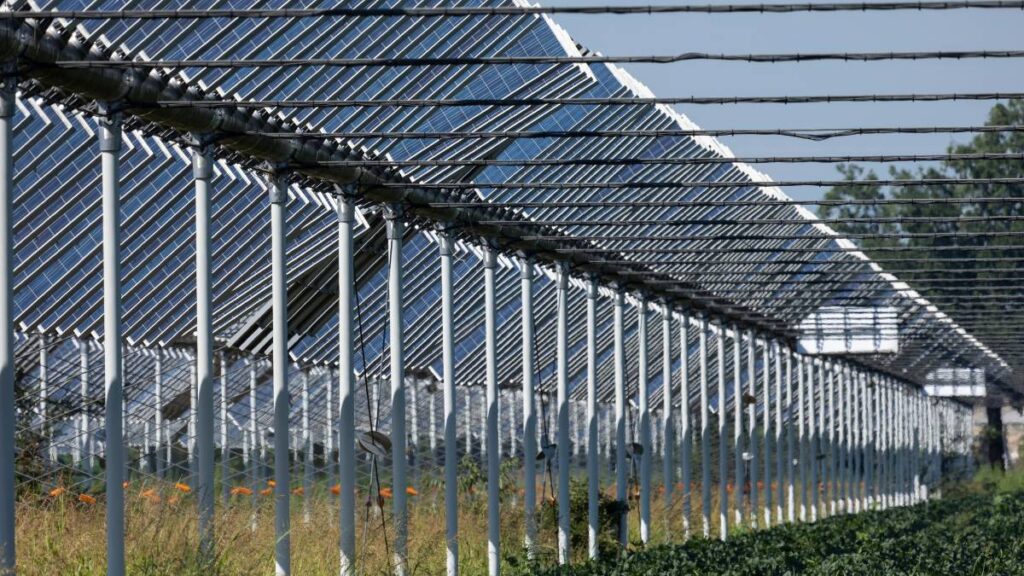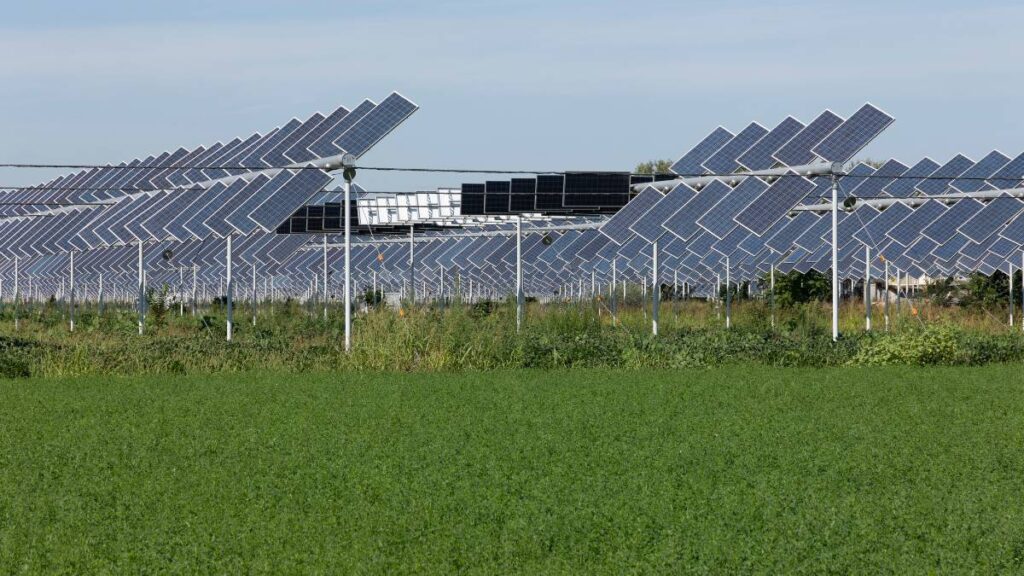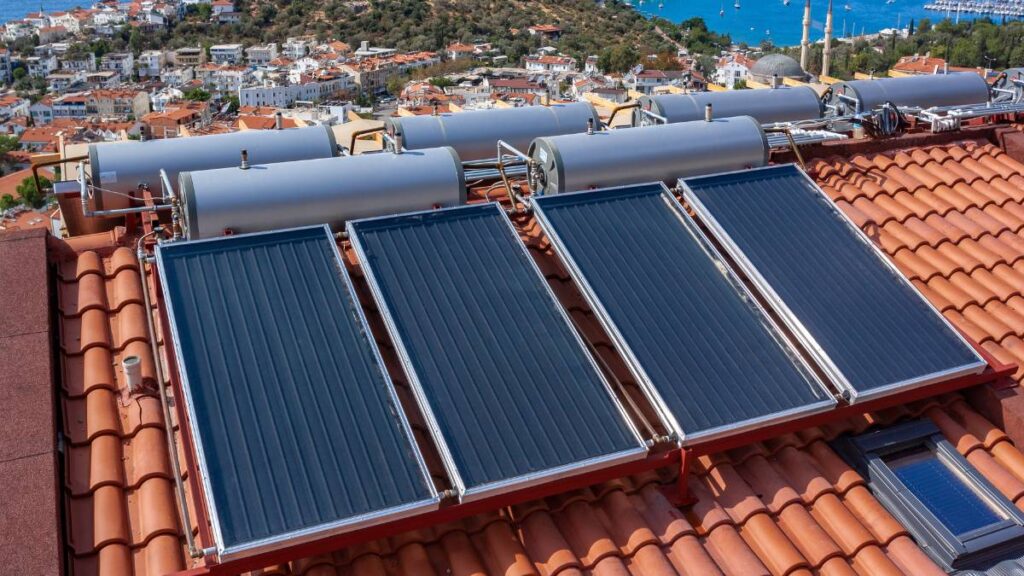Can we have our solar panels and eat our vegetables too? This question encapsulates the challenge of balancing land use for food production and renewable energy generation. Agrivoltaics, an innovative approach that combines solar energy and agriculture, offers a sustainable solution. By optimizing land use, agrivoltaics generates clean energy while supporting agricultural production, presenting a harmonious blend of technology and nature.
Unveiling Agrivoltaics
Agrivoltaics involves co-locating solar panels and agricultural activities on the same land, maximizing the utility of each square meter. This concept, evolving over recent years, harmonizes energy production and farming, allowing for dual land use that benefits both sectors.
Benefits of Agrivoltaics
The integration of solar panels and farming brings numerous benefits:
For Solar Energy:
- Increased land-use efficiency, enabling solar infrastructure without compromising agricultural land.
- Cooler operating temperatures for panels due to crop shading can enhance solar efficiency.
For Agriculture
- Improved crop yields from the moderated microclimate and reduced water loss through evaporation.
- Partial shade from panels can protect crops from extreme weather, enhancing growth conditions.
Sharing the Sun: Different Agrivoltaic Systems
Successful agrivoltaic systems require:
- Thoughtful design to benefit both solar production and agriculture.
- Selection of crops that thrive under the altered light and climate conditions.
- Consideration of initial costs for developing and installing agrivoltaic infrastructures.
Advancements in Agrivoltaics
Research aims to enhance agrivoltaic efficiency through:
- System design optimization for improved energy and agricultural output.
- Advanced solar technologies tailored for agrivoltaic use.
- Predictive models to assess system performance across various environmental conditions.

The Global Potential of Agrivoltaics
Globally, agrivoltaics is gaining traction, with projects demonstrating its viability and benefits. This approach can significantly contribute to sustainable development, supported by policies and incentives that encourage agrivoltaic adoption. Here are some notable examples from around the world:
Japan
Since the University of Tokyo initiated a study on agrivoltaics in 2004, Japan has seen a proliferation of solar farming projects. Notably, a 1.2 MW solar farm in Kyoto cultivates lettuce beneath its panels, enhancing crop yield while conserving water. Similarly, a 2.6 MW project in Chiba integrates strawberry farming, illustrating the practical benefits of this dual-use system.
France
In 2016, a winery in Bordeaux integrated solar panels with viticulture. The panels provide shade for grapevines, reducing water use and protecting the grapes from excessive sun exposure, while also generating electricity that contributes to the energy grid.
India
A farmer in Maharashtra pioneered the use of agrivoltaics in 2018 by installing solar panels over his pomegranate orchard. The system not only shades and protects the fruit but also powers the farm’s irrigation needs, showcasing agrivoltaics’ potential in enhancing agricultural efficiency and sustainability.
USA
Massachusetts introduced a 35-acre agrivoltaic project in 2019, featuring 7,000 solar panels used to grow crops like kale, Swiss chard, and bok choy. This setup reduces water usage and protects plants from sunburn, while generating approximately 1.5 million kilowatt-hours of electricity annually, enough to power 160 homes.
Australia
In 2020, Queensland launched a 10-MW agrivoltaic project with 40,000 solar panels to cultivate crops such as sweet corn, green beans, and pumpkins. This project illustrates how agrivoltaics can effectively reduce water consumption and provide crop protection, supplying enough power for 300 homes.
These examples underscore agrivoltaics’ versatile and scalable nature, demonstrating its effectiveness in varied climates and agricultural settings. By optimizing land use and integrating renewable energy production with agriculture, agrivoltaics is proving to be a key contributor to a sustainable and energy-efficient future.
Conclusion
Agrivoltaics stands as a transformative solution for sustainable land use, marrying food production with renewable energy generation. Its potential to redefine agricultural and energy landscapes underscores the importance of embracing and promoting this innovative practice. As we move towards a future where food security and clean energy coexist, supporting agrivoltaics becomes pivotal in shaping a sustainable world.







